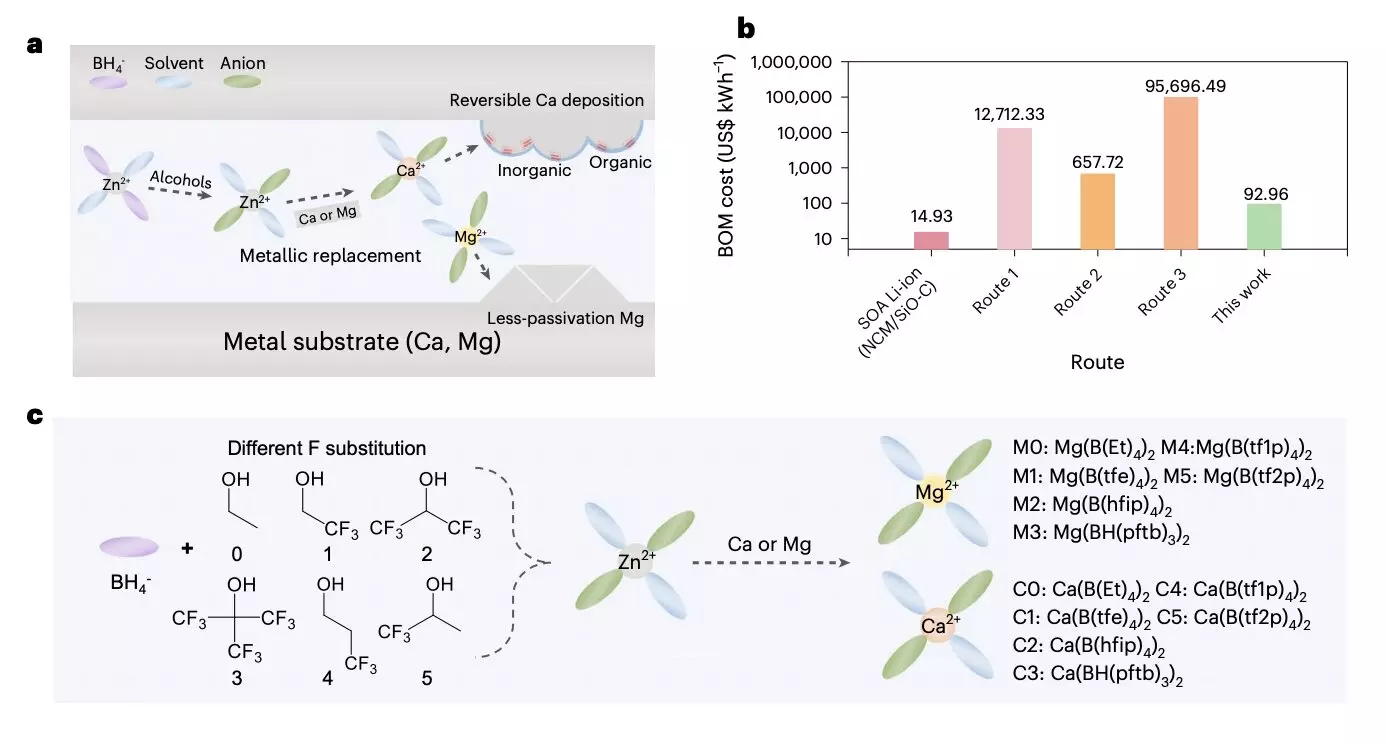As the use of electric and hybrid vehicles continues to rise globally, the development of safer and more efficient battery technologies becomes increasingly important. Engineers have been working to increase the safety, energy capacity, scalability, and longevity of batteries. One promising avenue is rechargeable multivalent metal batteries that utilize anode materials with low-reduction potentials, such as magnesium (Mg) and calcium (Ca). These batteries have the potential to achieve high energy densities when paired with the right combination of anodes, cathodes, and electrolytes.
Previously, the development of cost-effective and efficient electrolytes for multivalent metal batteries has been challenging. Many proposed electrolytes are difficult to source or require complex synthesis processes, making large-scale production impractical. Additionally, the exploration of cathode electrode/electrolyte interfaces and solvation structures is hindered by expensive precursors and intricate synthesis methods, limiting progress in battery technology.
Researchers from Zhejiang University, the ZJU-Hangzhou Global Scientific and Technological Innovation Center, and Dalian University of Technology have introduced a new, universal method to produce highly performing and scalable electrolytes for multivalent metal batteries. This breakthrough method, outlined in a paper published in Nature Energy, offers a potential solution to develop reversible and more affordable electrolyte systems for next-generation battery technologies.
The newly proposed method involves several steps. Initially, the research team initiated a chemical reaction between an easily accessible Zn(BH4)2 precursor and various fluoroalcohols, producing target anions with branched chains. These anion solvates then reacted with low-cost metal foils with higher metal activity, resulting in desired solvation structures. To maintain stable battery cycling and prevent solvent decomposition, the researchers suggested the formation of a passivation layer using two types of Ca solvates.
According to the researchers, fine-tuning anion participation in the primary solvation shell is critical for achieving optimal electrolyte performance. By adjusting the precursor chain length and F-substitution degree, the researchers can control anion behavior and enhance electrochemical kinetics. A fully dissociated Mg organoborate electrolyte demonstrated high current endurance, while a Ca organoborate electrolyte with strong coordination and B-H inclusion offered a stable solid-electrolyte interphase with high coulombic efficiency.
Using their new method, the researchers successfully created a high-loading battery prototype based on Mg/S, achieving an impressive energy density of 53.4 Wh/kg. The prototype included a 30 μm Mg anode, a low electrolyte/sulfur ratio (E/S = 5.58 μl/mg), and a modified separator/interlayer. Initial tests of the prototype showed promising results, highlighting the potential of this approach to produce affordable and favorable electrolytes for multivalent metal batteries.
The method introduced in this paper opens up possibilities for the creation of various reversible electrolyte systems that rely on more affordable materials and simplified processing strategies. These electrolytes have the potential to enable the development of scalable and safe multivalent metal batteries with higher energy densities. As researchers continue to refine and optimize the universal cation replacement method, we may soon witness significant advancements in battery technology, contributing to the widespread adoption of electric and hybrid vehicles.
The demand for improved battery technologies has driven research into the development of safer and more efficient multivalent metal batteries. The introduction of a universal method to produce highly performing and scalable electrolytes offers a promising solution. By utilizing affordable materials and simplified processes, researchers have unlocked the potential for creating cost-effective and reversible electrolyte systems. These advancements bring us one step closer to the realization of high-energy-density batteries and the widespread adoption of electric and hybrid vehicles.


Leave a Reply